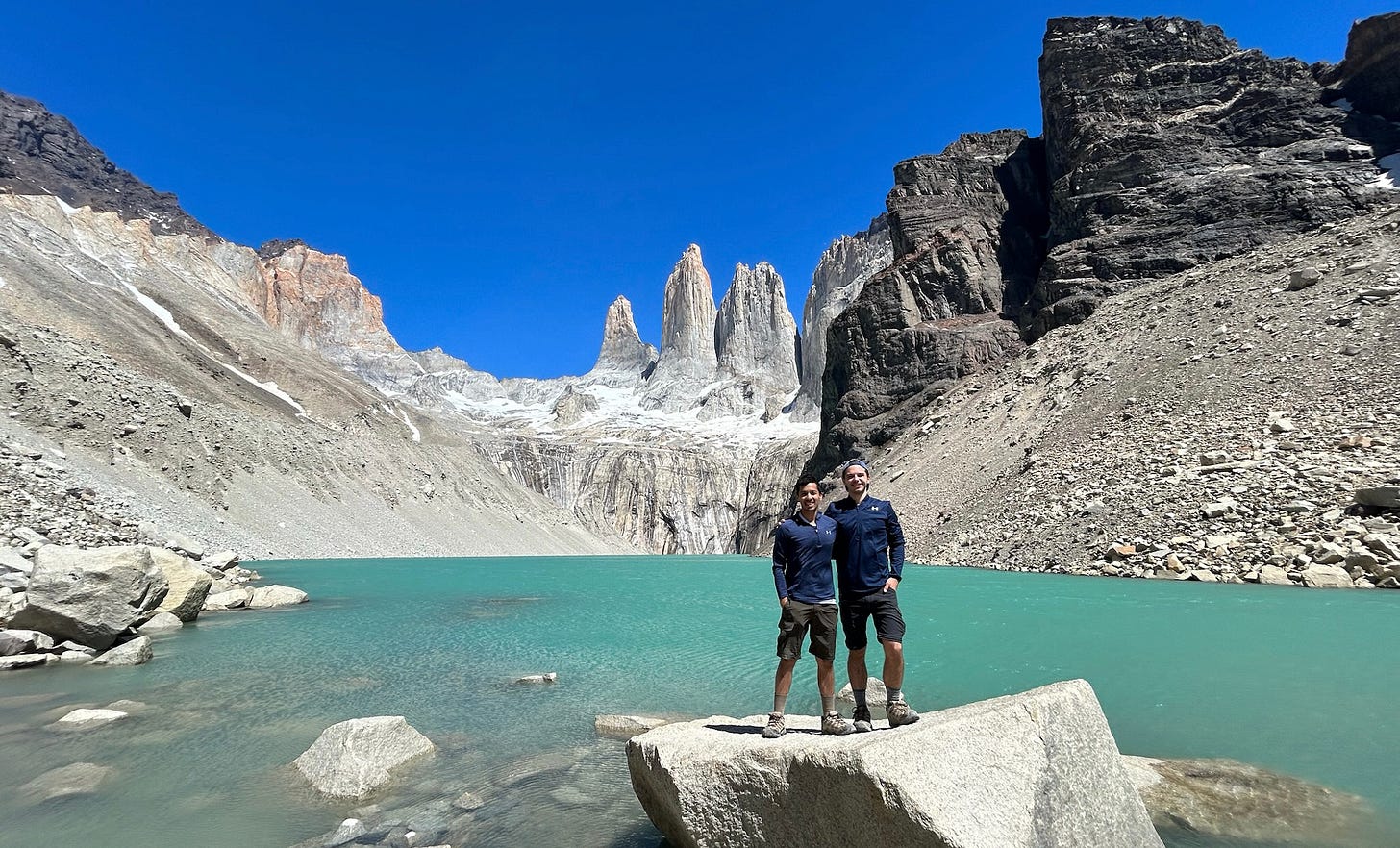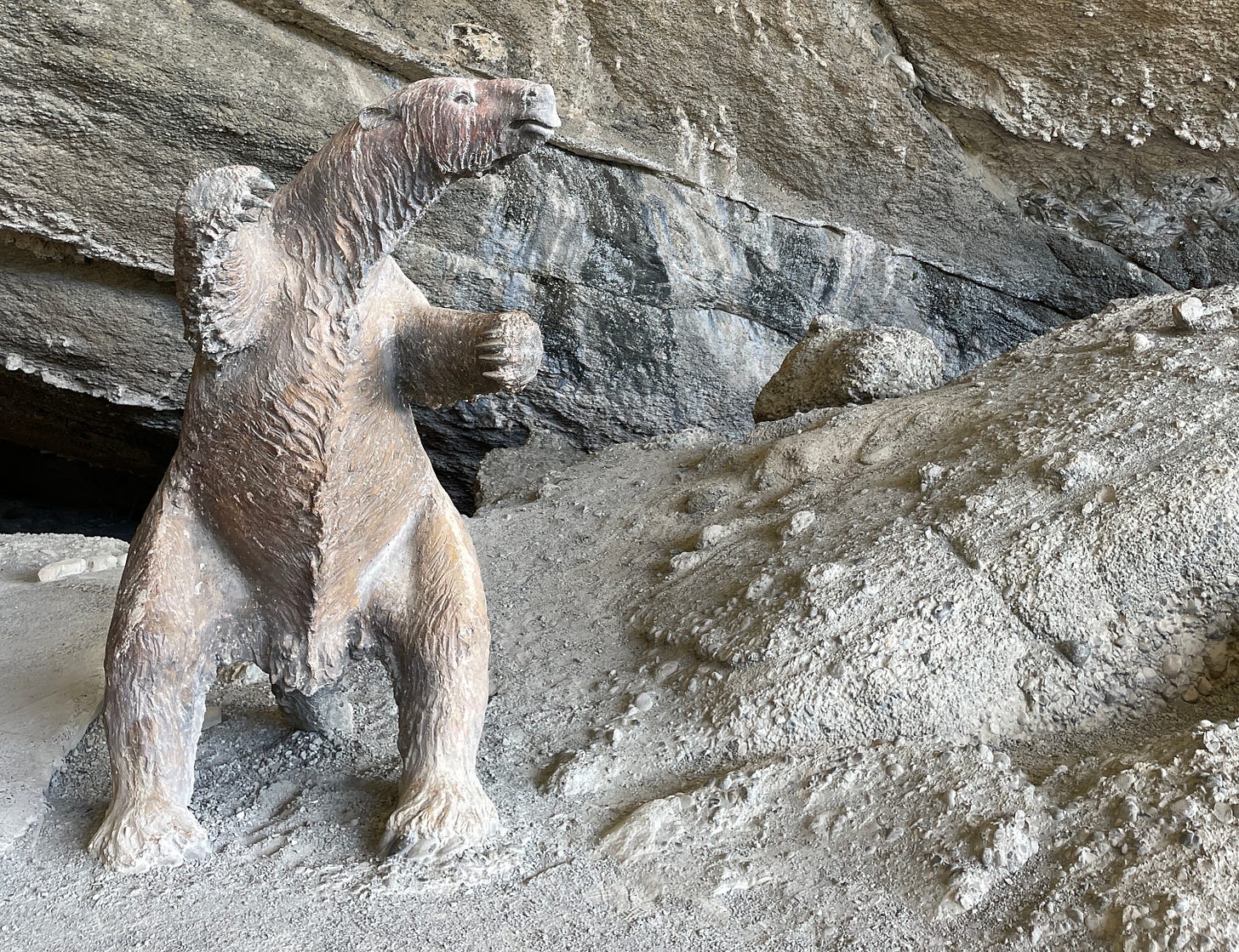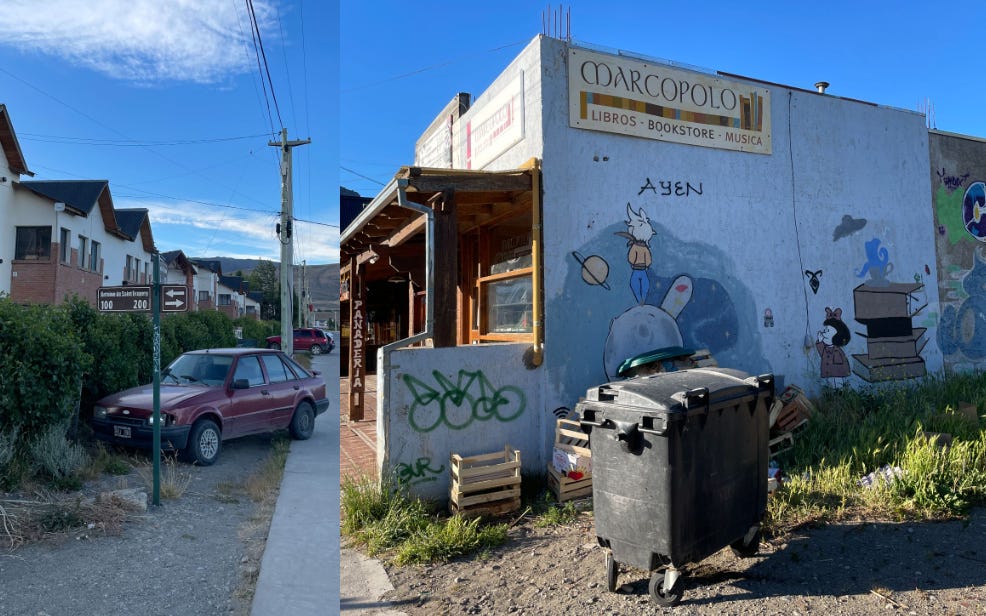Between Christmas and New Year’s, I traveled to both the Argentine and Chilean sides of Patagonia with the intrepid and introspective Sidd Muchhal. Sidd is one of my good friends of many years; he is also the author of the Kaloramic Substack, which is celebrating its anniversary this month with its own Patagonia-related post (to which I made a small contribution). Overall, it was one of my most profound experiences in recent memory; I hiked more than I ever have and was rewarded with the most spectacular panoramas I’d ever seen.
During the trip, both of us read In Patagonia (1977) by Bruce Chatwin, a series of 97 chapters that seamlessly navigate physical, ethnic, linguistic, and temporal borders, alternating between snapshots of different characters, towns, and landscapes and investigative dives into the region’s complex history. In doing so, Chatwin revolutionized the travel writing genre, incorporating an experimental style throughout a deeply personal frame narrative that took care to spotlight the compelling residents of one of the most remote regions in the world.
In his foreword to In Patagonia, Nicholas Shakespeare — another British author who lived in South America for several years and was later Chatwin’s biographer — writes that Chatwin’s descriptions of the Patagonian landscape are often lacking in detail, or are lacking altogether (despite being one of the most unique and arresting landscapes on Earth). What he instead illustrates clearly are portraits of people and homes, capturing wandering and loneliness through what Shakespeare describes as “interiors which are elsewheres.” Indeed, this is what I admired most about the book, in all its peculiarities.1
Bruce Chatwin died exactly 35 years ago to the day, at age 48, of complications related to AIDS.2 Despite embarking on a personal journey throughout In Patagonia, Chatwin minimizes himself as a narrator to hold space for his various subjects — much the opposite of the kind of travel writing that can often be an exercise in egotism. Especially after learning more about him and his life after I returned to Buenos Aires, I suppose I want to honor him in some way, as a token of gratitude for his book complementing the trip so meaningfully, for putting words to a sense of restlessness and wonder that Patagonia inspired in me just as it did him a half-century ago.
—
The sound of a glacier breaking is a rumbling thunder, a low-frequency sonic boom, a giant redwood cracking, bark and branches snapping, toppling as the fissure grows too large for it to stay upright, crashing to the ground with a roar and a dull thud, if anyone was there to hear it fall. (If a glacier breaks and no one is there to hear it, did it make a sound?) Groaning echoes throughout the valley like a castigation. Someone points to where a cloud of snow and vapor betrays from which point the chunk of ice fell, and your gaze lingers longing even seconds after the mist dissipates.
When we arrived in El Calafate and got a taxi from the airport to the bus station, Alyssa and I asked the taxi driver (in Spanish) if he had any recommendations for food nearby. His response was “Carne!” When we explained that Sidd neither eats meat nor speaks Spanish, he laughed and laughed but did not offer any other suggestions. It was Christmas Day, so all of the restaurants we encountered were closed anyway.
SM: The Mylodon Caves are usually considered a detour, but for Chatwin, it was the goal of his journey. As Casey and I entered this cave, we imagined multiple pasts. One where waves persistently battered a wall until it slowly gave way. One where the mythical Mylodons — prehistoric giant sloths — walked around. One where explorers tried to blow up the cave to find Mylodon remains. We marveled at the rocks bejeweled in the cave’s interior, having survived all these pasts. The area around the caves is called Última Esperanza. Last Hope.
[Among the hundreds of reforms and derogations included in Javier Milei’s “ley ómnibus” presented to Congress mere weeks ago is a modification to the Argentine Glacier Act (“Ley de Glaciares”) to permit economic activity (read: resource exploitation) to take place in periglacial zones, areas of frozen ground that regulate glacial mass and the access to freshwater that they provide. It also seeks to change the definition of what comprises a “glacier.” The legality of Milei’s measures is pending.]
The hike up to that point had been favorably not-too-steep, and we took a moment to admire the view from a rocky outcrop. A pair of chatty yellow songbirds twittered at our feet.3 But wait — we shouldn’t be plunging downhill into the forest of low trees and shrubs, right? Best to circle back. Yet after wandering a bit for ten or fifteen minutes, it was clear that our initial instinct had been correct. When we returned sheepishly, the finches were still there, chirping at us impatiently, annoyed that we hadn’t listened to them the first time, flying ahead and beckoning for us to follow.
SM: There is a council of mountains at the end of the French Valley, looking out at their kingdom and the majestic Lake Sköttsberg in the distance. Their heads cannot all be seen — the clouds give some more security than others. We re-orient from movement to stillness, taking in what four hours of effort led us to. Next to me, a young woman sits meditating, breathing slowly. When I look up, there are tears in her eyes.
The smooth bark of the young lenga beech tree, normally a muted purplish gray, glows a brilliant, glossy red in areas of its trunks or branches where it has served as a handhold supporting countless hikers on a strenuous climb. As the tree ages, its bark lightens and becomes ridged and scaly. Many of these older trees, wrinkled yet still vigorous and alive, are covered with a lichen that I later learned is called old man’s beard.
I read Night Flight (Vol de Nuit, 1931) by Antoine de Saint-Exupéry in high school, almost a decade ago, after several readings of The Little Prince had cemented its status as my favorite book. I hadn’t remembered that the semi-autobiographical novel was set in Argentina, my sentimental connection to the country only having been formed recently, until I read Chatwin’s description of how, in Night Flight, the pilot’s plane was sent flying backwards by the force of the Patagonian winds, no doubt inspired by Saint-Exupéry’s experience as a pilot. I encountered Calle Saint-Exupéry and Little Prince imagery in every Patagonian town we visited. I also grimaced through being buffeted by these intense gusts, which were infused with a similar nostalgia, bringing tears to my eyes.
Hearing massive chunks of the Perito Moreno glacier fall into the Lago Argentino — into which we were skipping stones, dumbstruck by beauty and tragedy, overcome with childlike wonder — and watching floating icebergs collapse in on themselves in the relentless summer sun took on an apocalyptic quality, a lump in my throat that I tried to swallow down. Even so, locals say that Perito Moreno is actually growing; at the very least, glaciologists debate how and why it is able to fight to maintain equilibrium.4 There is no applause for the gradual accumulation of mass and form, no fanfare for the steady, graceful arts of restoration and maintenance, only horrified gasps at booming acts of destruction.
All of Chatwin’s vignettes are wistful and poignant. Some of these portraits are haunting. For example: “There is a man in Punto Arenas, dreams pine forests, hums Lieder, wakes each morning and sees the black strait. He drives to a factory that smells of the sea. All about him are scarlet crabs, crawling, then steaming. He hears the shells crack and the claws breaking, sees the sweet white flesh packed firm in metal cans. He is an efficient man, with some previous experience of the production line. Does he remember that other smell, of burning? And that other sound, of low voices singing? And the pile of hair cast away as the claws of crabs?”
In this passage, the vagueness is the point. Chatwin doesn’t give too much away, but at the end of the chapter, which takes up barely half a page, he states: “Walter Rauff is credited with the invention and administration of the Mobile Gas Truck.” It took some Googling to confirm my suspicions that Rauff was one of the many Nazis who fled to South America (in this case, Chile) to escape prosecution. Rereading the chapter then made my hair stand on end.
Chatwin’s homosexuality and, indeed, anything about him other than his Englishness is “teasingly absent” throughout the book. Shakespeare only makes reference in passing to his “seduction” of the timid pianist Anselmo, a character to whom Chatwin dedicates several pages, as one of the many personal anecdotes that Chatwin left out of the book. Otherwise it would be impossible to know; he did, after all, have a wife whom is mentioned on a few occasions. Only upon further research did I learn that Chatwin collaborated closely with the photographer Robert Mapplethorpe, well known for his black-and-white nudes and erotic art depicting the gay BDSM scene in New York (Mapplethorpe also died from complications related to AIDS in 1989).
I’m convinced that Patagonia is home to the most adorable songbirds in the world. These yellow finches were striking, the males a bright yellow and black while the females were more of a muted olive-gray. I only saw them in pairs, never alone, probably gossiping about maladroit passers-by like ourselves.








